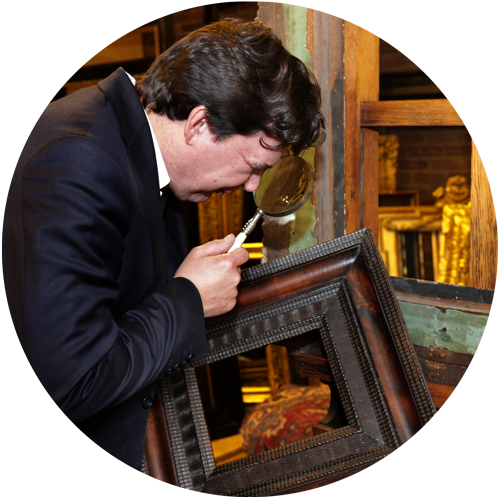
LUKE PRICE
HEAD OF FINE FRAMES SALE
As with paintings, the reverse of a frame offers a rich insight into its origin and age. The reverse can reveal far more than the work itself, from old, torn and worn gallery labels tantalisingly suggesting provenance that is yet to be established, to the indistinct inventory chalk marks from past auction houses. The canvas and construction of the stretcher, and artists suppliers stamps all go on to reveal the hidden history and production of the work. This all helps towards providing us with the evidence to establish the work’s authenticity.
Those familiar with joinery will marvel at the construction of frame joints, which can only be revealed by inspecting the back of a frame. From the raw sawn simple lap joints of a 16th century cassetta frame, to the French mitre jointed frames, secured with a spline – see Lot 54 in our catalogue, A Monumental French 17th Century style transitional Louis XIV gilded composition frame, where the spline is shown in the last photograph. Many of the Flemish and Dutch frames also display an array of lap halved joints, mitred half joints and open mortise and tenon joints to name but a few

